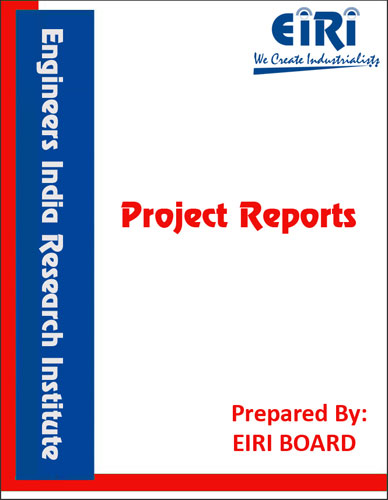The project report includes Present Market Position and Expected Future Demand, Market Size, Statistics, Trends, SWOT Analysis and Forecasts. Report provides a comprehensive analysis from industry covering detailed reporting and evaluates the position of the industry by providing insights to the SWOT analysis of the industry.
Tomatoes are amongst the most widely grown crop in India. The largest production centers are in southern and central India-Principally the states of Andhra Pradesh, Telangana, Karnataka, Madhya Pradesh and Maharashtra. Tomatoes are produced and processed during the two main seasons across much of India-August to October (Kharif) and December to April (rabi).
Where conditions suit, tomatoes are also grown during the off-season (May to July) including under protected cultivation though given the low volumes of production, prices are often the highest during this period.
India is the world’s second largest tomato producer but processes less than 1% of its production. This impacts farmers by way of high postharvest losses and low returns during periods of market glut. Indian tomato based product manufacturers import significant quantities of tomato pulp and paste at high prices which also entails an import duty of 30%. Existing Indian paste and pulp makers are unable to operate their units at optimum capacities due to a lack of fresh tomato at the required volumes at the right price. Further, the types of tomatoes currently grown in India are generally less suitable for processing due to their low quality parameters for paste and pulp production. The overall result of these constraints is a loss of value to all stakeholders involved with tomato production and processing and its wider impact on local and regional
economic development.
On the other hand, the demand in India for processed tomato products has been growing at an annual rate of about 30% over the past 3 years. Further, the range of processed tomato foods is also expanding with the introduction and demand for several ready to eat meals, curries and snack products finding favor with the Indian consumer. As a result, new tomato processing facilities are being established by both existing and new entrants into the Industry. Recognizing the tomato and paste supply chain constraints, several are taking steps to either establish local paste production themselves or partner with paste production intermediaries to enhance and sustain local supplies. The critical challenge for these processors is the availability of sufficient volumes of fresh tomatoes meeting processing quality standards on a consistent basis and at a price point which makes processing viable.
The German Government’s “Green Innovation Centre in the Agri-Food Sector” (GIAE) which focuses on improving the India tomato value chain with a focus on two states, Maharashtra and Karnataka provides a platform to examine, test and scale up value chain improvements to particularly address supply chain constraints which could benefit both farmers and processors.
Tomato is one of the most important food crops in India. It grows in almost every state of the country. Some of the major producing states are Bihar, Karnataka, Uttar Pradesh, Orissa, Andhra Pradesh, Maharashtra, Madhya Pradesh and West Bengal.
Tomato is a rich source of vitamins A, C, potassium, minerals, and fibers. Tomatoes are used in the preparation of soup, salad, pickles, ketchup, puree, sauces and also consumed as a vegetable in many other ways. As the raw material is available throughout the country, a small scale tomato processing unit is a profitable venture in India.
Large scale tomato processing includes various operations like producing tomato juice, ketchup, puree etc.
Tomato processing unit/Tomato Puree is the name implies to tomato Pulp which is concentrated by the evaporators either open pan or vacuum evaporators.
It is prepared by concentrating tomato juice or pulp without seeds and skin. It is used for preparation of various products such as Sauces, Ketchup, Chutney, Soup, Tomato Juice.
Tomatoes are taken, which are well-ripened. So the fresh ripen tomatoes are very refreshing and appetizing. they are good source of vitamin. The main tomato producing states are A.P., Bihar, M.P. Punjab, Tamil Nadu, West Bengal and Maharashtra.
Two varieties of tomatoes are available in India then are the large round ones which are quite sour and the tongish type which are sweetish and less sour. Most of the tomato products are prepared from tomato pulps, which is unflavored, finely divided flesh and juice separated from skins and seeds. It is usually concentrated to a greater or less degree before used in other products.
Results of this work are evidence by a large number of articles, patents and commercial installation for conc. of fruits and vegetable juices or pulps. Possible savings in packaging, storage, transportation and convenience in certain instances, account for the continued interest in commercial development of products. It is evident, however, that the present trends towards ready to use desserts and other formulated food products and much to the commercial possibilities of tomato conc and pulps
INTRODUCTION
USES AND APPLICATIONS
RAW MATERIALS
B I S SPECIFICATIONS
OVERVIEW OF TOMATO IN INDIA
MARKET POSITION
MANUFACTURERS/EXPORTERS OF TOMATO PROCESSING
COMPOSITION OF TOMATO
MANUFACTURING PROCESS
EFFECT OF STORAGE ON THE COLOUR AND SENSORY ATTRIBUTES OF TOMATO PUREE MATERIALS AND METHODS
MANUFACTURING PROCESS IN DETAILED
TOMATO PUREE
QUALITY CONTROL
PROCESS FLOW DIAGRAM FOR TOMATO PUREE
PROCESS FLOW DIAGRAM FOR TOMATO PROCESSING
MANUFACTURING PROCESS OF TOMATO KETCHUP
PROCESS FLOW DIAGRAM FOR TOMATO KETCHUP
TECHNICAL ASPECTS FOR TOMATO PROCESSING
OPERATION IN TOMATO PROCESSING UNIT
LICENSE & REGISTRATION REQUIRE FOR TOMATO PROCESSING UNIT
SUPPLIERS OF PLANT AND MACHINERIES
COMPLETE PLANT & MACHINERY SUPPLIERS FOR TOMATO
PROCESSING UNIT
SUPPLIERS OF RAW MATERIALS
APPENDIX – A:
1. COST OF PLANT ECONOMICS
2. LAND & BUILDING
3. PLANT AND MACHINERY
4. FIXED CAPITAL INVESTMENT
5. RAW MATERIAL
6. SALARY AND WAGES
7. UTILITIES AND OVERHEADS
8. TOTAL WORKING CAPITAL
9. COST OF PRODUCTION
10. PROFITABILITY ANALYSIS
11. BREAK EVEN POINT
12. RESOURCES OF FINANCE
13. INTEREST CHART
14. DEPRECIATION CHART
15. CASH FLOW STATEMENT
16. PROJECTED BALANCE SHEET



